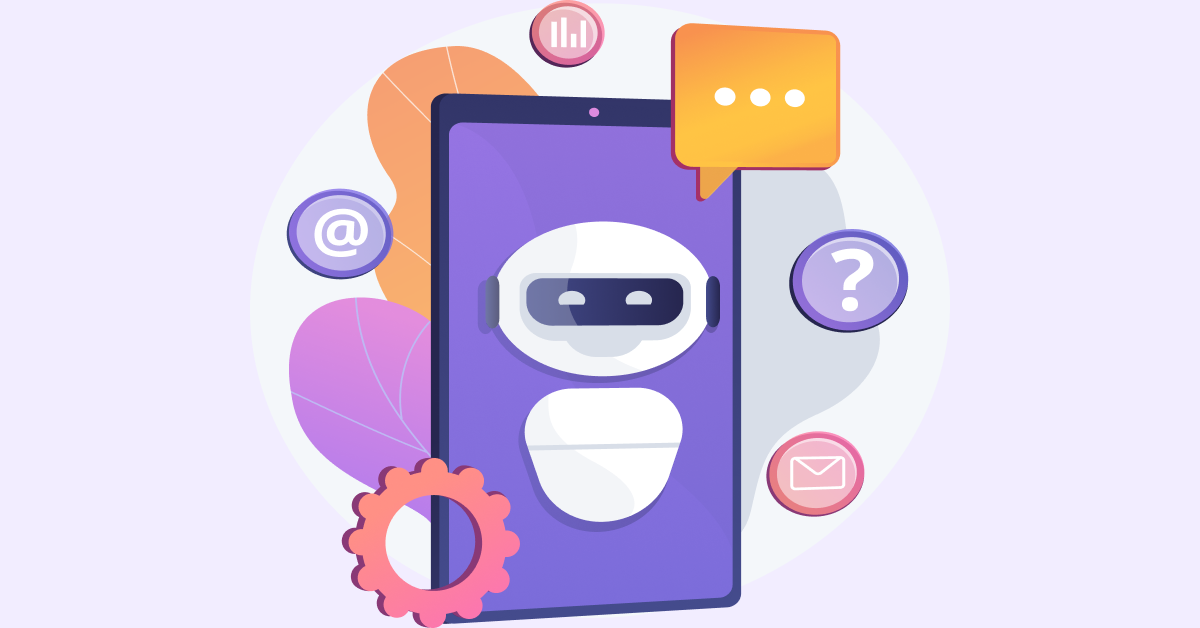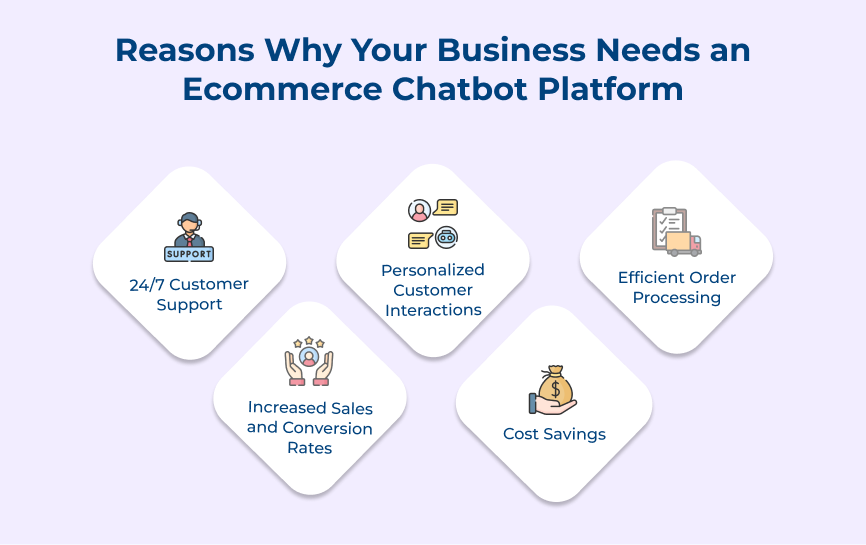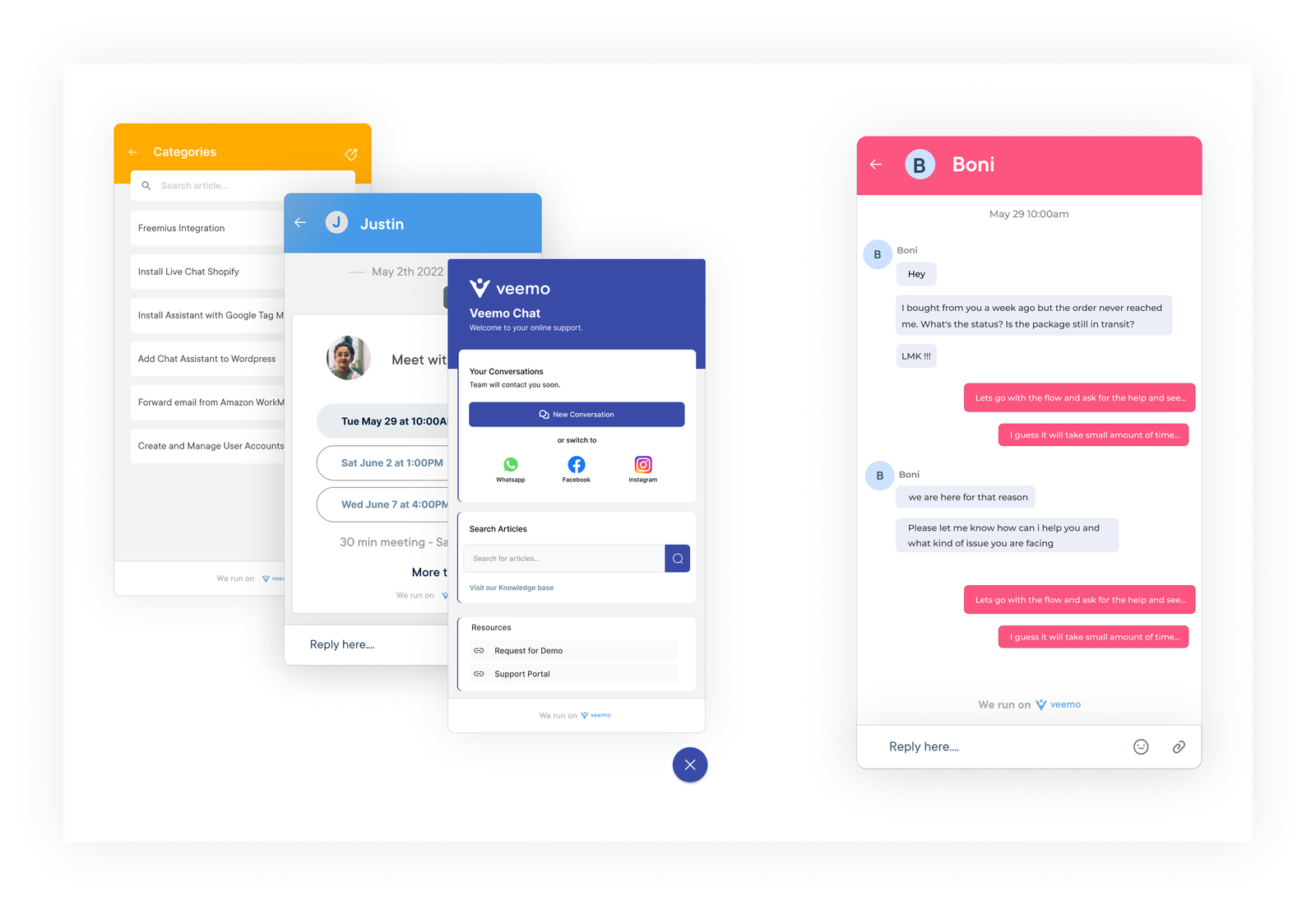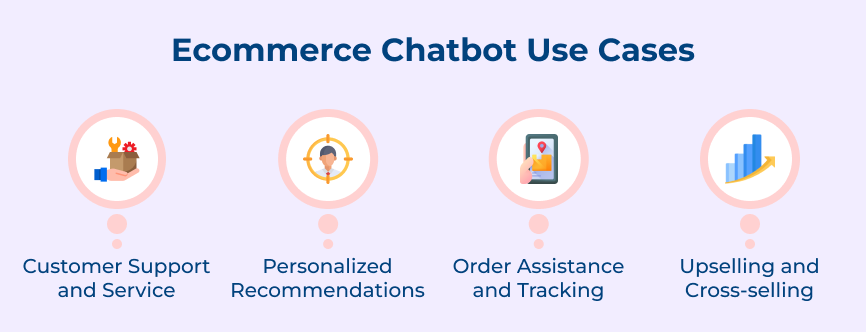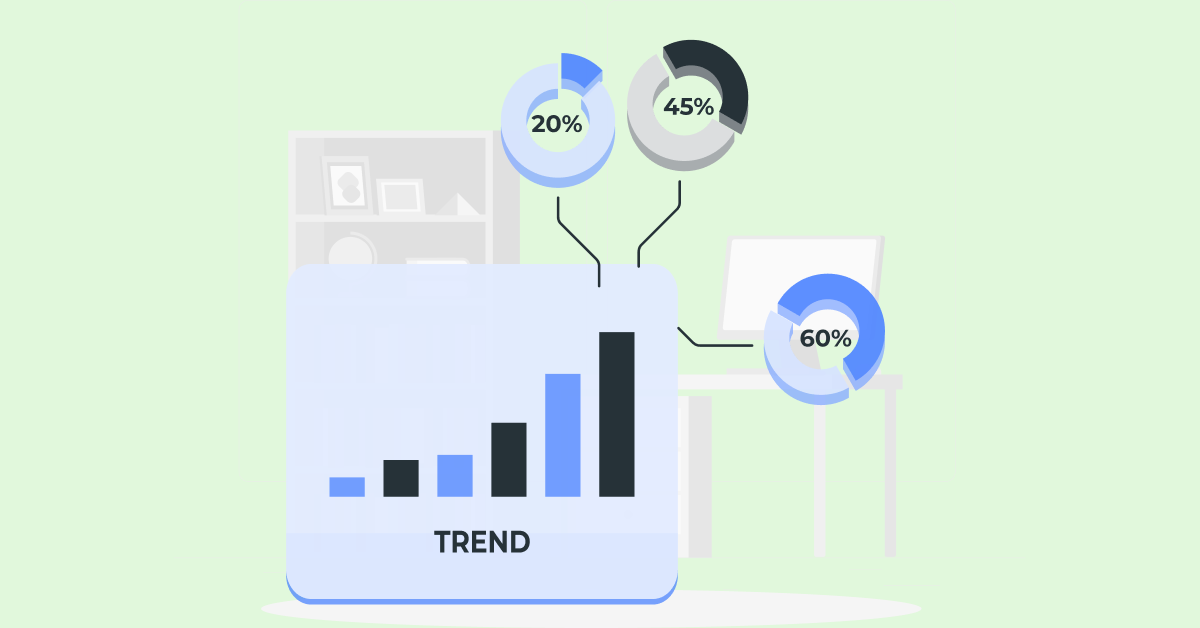1. Personalize the Services
Personalizing customer experiences has become a crucial aspect of ecommerce businesses today, and one effective way to achieve it is through the use of ecommerce chatbots. They allow businesses to gather data about each customer’s preferences, purchase history and browsing behavior. The insights are used to provide personalized product recommendations, promotions and customer support.
Imagine a customer visiting an online clothing store and engaging with the chatbot. The chatbot can use AI algorithms to analyze the customer’s previous purchases, preferred style and even their social media activity to suggest the most suitable clothing options. The personalized approach not only increases the chances of conversion but also enhances the overall customer experience.
Best practices:
- Ensure the chatbot has access to accurate and up-to-date customer data. It can be achieved through integrations with the CRM or ecommerce platform.
- Use natural language processing to understand customer queries and provide relevant responses.
- Regular updates and training of the chatbot’s AI algorithms will help improve its ability to personalize recommendations.
2. Records Real-Time Interactions
Recording real-time interactions is a powerful method to significantly enhance the effectiveness of ecommerce chatbots to supercharge sales and support for the eCommerce website. Real-time interaction records are a way to analyze the conversations between the chatbot and customers, allowing businesses to gain valuable insights for optimizing their strategies.
Let’s consider an ecommerce store that sells beauty products. Analyzing the records of real-time interactions makes the business discover that many customers have questions about the ingredients used in their products. The store can proactively address the concerns on its website or product pages, making it easier for customers to find the information they need and eventually boosting sales.
Best practices:
- Businesses should regularly analyze the records to identify trends, patterns and areas for improvement.
- Ensure data privacy and security by implementing measures to protect customer information.
- Businesses should regularly train their chatbot based on the insights gained from the records, ensuring that it remains capable of providing helpful information to customers.
3. Allows Customer Executives to Focus on Complex Tasks
Chatbots work to handle routine inquiries and provide quick responses. It frees the customer executives to tackle more challenging issues that require their expertise and attention. The approach not only improves the efficiency of the eCommerce store’s operations but also enhances the overall customer experience.
Imagine a customer is browsing an eCommerce website and has a question about a product’s specifications. Instead of waiting for a customer executive to become available, the chatbot can instantly provide the necessary information, ensuring a seamless browsing experience. The customer executive can dedicate their time to resolving more intricate problems or assisting customers with unique needs.
Best Practices:
- Ensure the chatbot is properly trained and equipped with the necessary information to handle a wide range of inquiries.
- Regular updates and improvements should also be made to enhance the chatbot’s capabilities over time.
- Maintaining a balance between automation and human interaction is crucial.
4. Empowers to Display Your Catalog Across Multiple Channels
Having a strong online presence is crucial for the success of any ecommerce store. One way to ensure the business reaches a wide audience is by using ecommerce chatbots, empowering you to display the catalog across multiple channels. They ensure that your potential customers can easily discover and engage with the products, increasing the chances of generating sales.
Imagine you have an ecommerce store selling fashion accessories. Leveraging an ecommerce chatbot allows businesses to integrate it into their website, Facebook Messenger, Instagram and even voice assistants like Amazon Alexa. It allows customers to browse the catalog, ask questions and make purchases seamlessly on any platform they prefer.
Best practices:
- Ensure that the chatbot is accessible and user-friendly across all channels.
- Make sure it provides up-to-date product information, including pricing and availability.
- Consider personalizing the chatbot’s responses based on customer preferences and browsing behavior.
5. Act as the Perfect Knowledge Base
AI chatbots for ecommerce serve as a highly effective knowledge base. Customers often have numerous questions and concerns while browsing through an online store. Utilizing a chatbot allows businesses to ensure customers receive timely and accurate responses, providing them with the information they need to make informed purchasing decisions.
Think of a customer who visits an eCommerce website looking for a specific product. They have questions about its features, availability and delivery options. Instead of searching through multiple pages or waiting for a customer service representative to respond, they can simply interact with the chatbot. It swiftly provides all the necessary information to them.
Best practices:
- Regularly update the bot’s information to keep up with product inventory, promotions and changes in policies.
- The chatbot should be designed to respond to users’ questions accurately and efficiently, avoiding generic or irrelevant answers.
- Integrating the chatbot with other systems like CRM or inventory management can provide a seamless experience.
6. Generates Sales with Storytelling
Chatbots can create an engaging shopping experience for customers by leveraging the power of storytelling, resulting in increased conversions and customer loyalty. Storytelling is powerful in marketing as it allows businesses to connect with their audience on an emotional level, making their brand more relatable. When used in conjunction with chatbots, storytelling can take the shopping experience to the next level.
An excellent example of storytelling through eCommerce chatbots is the clothing brand, Everlane. Their chatbot utilizes storytelling to showcase the journey of their products, from sourcing materials to production. Humanizing its brand and sharing behind-the-scenes stories allows Everlane to create a deeper connection with customers.
Best practices:
- Understand the target audience and tailor the stories accordingly. It allows for a more personalized experience that resonates with customers.
- Keep the stories concise, ensuring they are engaging enough to capture attention and maintain interest.
- Incorporating visuals and interactive elements can also enhance the storytelling experience.
7. Drives Lead Generation and Email Marketing
Not only do the AI chatbots for ecommerce provide immediate customer support, but they also have the power to drive lead generation and boost email marketing efforts. Interactively engaging with website visitors allows chatbots to collect valuable customer information, such as email addresses, preferences and purchase history.
Imagine a scenario where the customer visits the online store. A chatbot can initiate a conversation, offering product recommendations based on the customer’s browsing history or previous purchases. Integrating with email marketing platforms allows the chatbot to send follow-up emails with tailored promotions or reminders, nurturing leads through the sales funnel.
Best practices:
- Ensure the chatbot is seamlessly integrated with the email marketing software, allowing for easy data synchronization and automation.
- Personalize the chatbot interactions by using customer names and previous purchase information.
- Make sure to regularly update and refine the chatbot’s responses to provide accurate information to customers.
8. Provides Metrics
Providing metrics is a crucial feature that can greatly enhance the sales and support capabilities of ecommerce chatbots for the ecommerce website. Metrics provide an overview of the chatbot’s performance and effectiveness. It allows you to track key indicators such as the number of interactions, response time and conversion rates.
Using metrics is essential for measuring the success of the chatbot in driving sales and providing support. Let’s say you are using ecommerce AI chatbots that assist customers with product recommendations. Analyzing metrics enables businesses to identify which recommendations are leading to the most conversions and adjust the chatbot’s algorithms accordingly.
Best practices:
- First, set clear goals and define the key performance indicators (KPIs) you want to track.
- Regularly analyze the data and make data-driven decisions to optimize the chatbot’s performance.
- Use A/B testing to experiment with different chatbot configurations and measure their impact on sales or support.
List of 5 Best Ecommerce Chatbots Software
Following are the best eCommerce chatbot software solutions that can elevate your online business and redefine customer interactions for the better.
1. Veemo
Veemo Chat is customer service software with a chatbot feature for all businesses, specifically for e-commerce businesses. It combines the power of AI and automation to create seamless interactions with customers. The platform equips businesses with the tools they need to provide efficient customer support, improve engagement and increase conversions
